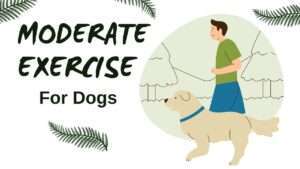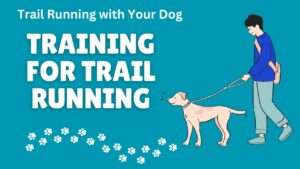Dog walking is more than just a chore; it’s a bonding experience, a form of exercise, and a way for dogs to explore the world around them. Whether you’re a seasoned dog owner or considering getting a furry companion, understanding the ins and outs of dog walking is essential. In this complete guide, we’ll delve into the tips, tricks, and benefits of dog walking, providing insights for both beginners and experienced dog lovers alike.
Contents Overview
Why is Dog Walking Important?
Dog walking serves as more than just a means of exercise for your furry companion—it’s an essential aspect of their overall well-being. Here’s why:
- Physical Exercise:
- Dogs, regardless of breed or size, require regular physical activity to maintain optimal health.
- Daily walks help prevent obesity, joint problems, and other health issues by promoting muscle strength, cardiovascular health, and weight management.
- Lack of exercise can lead to behavioral problems like excessive barking, destructive chewing, or hyperactivity.
- Mental Stimulation:
- Walking provides mental enrichment by exposing dogs to new sights, sounds, and smells, stimulating their senses and keeping them mentally engaged.
- Exploration during walks satisfies dogs’ natural curiosity and instincts, preventing boredom and alleviating stress or anxiety.
- Dogs require mental stimulation to prevent behavioral issues such as digging, excessive barking, or aggression, which can arise from pent-up energy and frustration.
- Socialization Opportunities:
- Dog walks offer chances for dogs to interact with other dogs, people, and various environments, promoting social skills and confidence.
- Positive interactions during walks help dogs learn appropriate behaviors, communication signals, and social cues, contributing to their overall well-being and adaptability.
- Socialization is crucial for puppies to develop into well-adjusted adult dogs, capable of navigating different social situations and environments.
- Bonding Time:
- Walking with your dog strengthens the bond between you and your furry companion, fostering trust, communication, and companionship.
- It’s an opportunity for quality one-on-one time, away from distractions, where you can focus on your dog’s needs, preferences, and individual quirks.
- Bonding during walks enhances the emotional connection between dogs and their owners, leading to a happier, healthier relationship.
Guidelines for Successful Dog Walking
Successfully walking your dog involves more than just grabbing a leash and heading out the door. It requires preparation, patience, and understanding of your dog’s needs. Here’s a comprehensive guide to ensure your dog walking experiences are enjoyable and stress-free:
- Establish a Consistent Routine:
- Dogs thrive on routine, so establish a consistent walking schedule that aligns with your dog’s needs and energy levels.
- Aim for at least one or two walks per day, depending on your dog’s breed, age, and fitness level.
- Consistency helps reinforce good behavior and provides your dog with a sense of security and predictability.
- Use Proper Equipment:
- Invest in a well-fitting collar or harness and a sturdy leash suitable for your dog’s size, breed, and walking style.
- Collars should be snug but not too tight, and harnesses should distribute pressure evenly across the body to prevent discomfort or injury.
- Consider using a harness for dogs prone to pulling or a head halter for better control and comfort.
- Practice Good Walking Etiquette:
- Teach your dog basic obedience commands like “heel,” “sit,” and “stay” to maintain control and prevent accidents during walks.
- Encourage your dog to walk beside you on a loose leash, rewarding good behavior with treats, praise, or toys.
- Be mindful of your surroundings and respectful of others by cleaning up after your dog and adhering to leash laws and regulations in your area.
- Understand Your Dog’s Body Language:
- Pay attention to your dog’s body language during walks to gauge their comfort level and emotional state.
- Signs of stress or discomfort may include panting, excessive pulling, tucked tail, or flattened ears.
- Adjust your walking pace, route, or behavior accordingly to ensure your dog feels safe and relaxed.
- Stay Alert and Be Prepared:
- Keep an eye out for potential hazards such as traffic, other animals, or unsafe terrain during walks.
- Carry essentials like water, treats, poop bags, and a first aid kit to address any unforeseen situations or emergencies.
- Familiarize yourself with common dog toxins and hazards in your area, such as poisonous plants or wildlife, to keep your dog safe during walks.
- Provide Mental Stimulation:
- Incorporate mental stimulation into your walks by varying the route, allowing time for sniffing and exploring, and introducing new environments or obstacles.
- Engage your dog in interactive games or training exercises during walks to keep their mind engaged and prevent boredom.
- Be Patient and Positive:
- Patience is key when walking your dog, especially if they’re still learning leash manners or obedience commands.
- Use positive reinforcement techniques such as treats, praise, and consistency to reward desired behaviors and redirect or ignore unwanted ones.
- Avoid punishment or harsh corrections, as these can undermine trust and confidence in your dog and may lead to fear or aggression.
- Adapt to Your Dog’s Needs:
- Be flexible and adaptive to your dog’s individual needs and preferences during walks.
- Consider factors such as weather, temperature, and physical condition when planning your walks, and adjust accordingly to ensure your dog’s comfort and safety.
By incorporating these tips into your dog walking routine, you can ensure that every walk with your furry friend is enjoyable, safe, and fulfilling for both of you. Remember to stay patient, positive, and attentive to your dog’s needs, and enjoy the bonding experience that walking provides.
On-Leash and Off Leash Training Tips
Training your dog for both on-leash and off-leash walking requires patience, consistency, and understanding of your dog’s behavior. Here’s a comprehensive guide to help you effectively train your dog for both scenarios:
On-Leash Training
- Start Early:
- Begin leash training as early as possible, ideally when your dog is still a puppy. This allows them to develop good habits from the start.
- Use Positive Reinforcement:
- Use treats, praise, and rewards to reinforce desired behaviors such as walking calmly beside you on a loose leash.
- Reward your dog immediately when they exhibit the desired behavior, reinforcing the connection between the behavior and the reward.
- Teach Basic Commands:
- Teach your dog basic obedience commands such as “heel,” “sit,” and “stay” to maintain control and prevent pulling during walks.
- Practice these commands in a controlled environment before applying them during walks.
- Be Patient and Consistent:
- Leash training takes time and consistency, so be patient with your dog and practice regularly.
- Correct unwanted behaviors calmly and consistently, redirecting your dog’s attention back to you and rewarding good behavior.
- Use Proper Equipment:
- Use a well-fitting collar or harness and a sturdy leash suitable for your dog’s size and breed.
- Avoid using retractable leashes, as they can encourage pulling and lack the control necessary for effective leash training.
- Stay Alert and Be Prepared:
- Keep an eye out for distractions or potential hazards during walks, and be prepared to redirect your dog’s attention if needed.
- Carry treats, toys, and other incentives to keep your dog engaged and focused on you during walks.
Off-Leash Training
- Establish Reliable Recall:
- Start by teaching your dog a strong recall command, such as “come” or “here,” in a controlled, low-distraction environment.
- Use high-value rewards and praise to reinforce the recall command, gradually increasing the distance and distractions as your dog becomes more reliable.
- Use a Long Line:
- When transitioning to off-leash training, use a long line or training leash to give your dog freedom while still maintaining control.
- Begin in a fenced or enclosed area where your dog can safely explore off-leash while still under your supervision.
- Practice in Safe Environments:
- Start off-leash training in safe, enclosed areas such as fenced parks or designated off-leash areas.
- Avoid busy streets, crowded areas, or places with potential hazards until your dog has mastered off-leash obedience.
- Monitor Your Dog’s Behavior:
- Pay close attention to your dog’s behavior and body language during off-leash training, watching for signs of distraction, anxiety, or excitement.
- Recall your dog if they become overly excited or fixated on something, redirecting their attention back to you and reinforcing the recall command.
- Be Patient and Consistent:
- Off-leash training requires patience, consistency, and repetition to build trust and reliability in your dog.
- Practice off-leash obedience regularly in different environments and situations to reinforce good behavior and solidify the recall command.
- Gradually Increase Freedom:
- As your dog becomes more reliable off-leash, gradually increase their freedom and independence, allowing them to explore new areas and environments.
- Always prioritize your dog’s safety and well-being, and be prepared to intervene or recall your dog if necessary.
Benefits of Dog Walking for Owners
Dog walking offers a multitude of benefits for dog owners beyond just providing exercise for their furry companions. Here’s a detailed look at how dog walking enhances the lives of owners:
- Improved Physical Health:
- Regular dog walking promotes physical activity for owners, leading to improved cardiovascular health, weight management, and overall fitness.
- Walking with your dog provides a convenient and enjoyable form of exercise that encourages consistency and adherence to a healthy lifestyle.
- The physical activity involved in dog walking can help lower blood pressure, reduce cholesterol levels, and decrease the risk of obesity-related health issues.
- Enhanced Mental Well-being:
- Spending time outdoors with a furry companion has been shown to reduce stress, anxiety, and feelings of loneliness in owners.
- The companionship and unconditional love of a dog can provide emotional support and comfort during challenging times, promoting mental resilience and well-being.
- Walking provides opportunities for relaxation, mindfulness, and connection with nature, leading to increased happiness and overall life satisfaction.
- Social Connections:
- Dog walking often leads to social interactions with other dog owners, fostering new friendships and a sense of community.
- Connecting with like-minded individuals during walks provides social support, companionship, and shared experiences, enhancing overall social well-being.
- Dog parks, group walks, and pet-related events offer opportunities for owners to meet new people, engage in conversations, and build meaningful relationships.
- Stress Reduction and Mood Enhancement:
- The act of walking with a dog releases endorphins and dopamine in the brain, which are neurotransmitters associated with feelings of happiness and well-being.
- Engaging in regular physical activity with a dog can help reduce symptoms of depression, anxiety, and stress in owners.
- The presence of a dog has been shown to have a calming effect on individuals, leading to lower levels of cortisol, the stress hormone, in the body.
- Increased Accountability and Routine:
- Walking a dog creates a daily routine and a sense of responsibility, which can provide structure and purpose to one’s life.
- The commitment to regular walks instills discipline, time management skills, and a sense of accomplishment in owners, leading to increased productivity and satisfaction.
- Dogs rely on their owners for daily care and exercise, motivating owners to prioritize their health and well-being as well.
- Opportunities for Exploration and Adventure:
- Dog walking encourages owners to explore new neighborhoods, parks, and trails, providing opportunities for adventure and discovery.
- Exploring different environments with a dog stimulates curiosity and curiosity in owners, leading to a deeper appreciation for nature and the world around them.
- Outdoor activities such as hiking, jogging, or exploring nature trails with a dog can add excitement and variety to a routine and enhance the overall enjoyment of life.
In summary, dog walking offers numerous benefits for owners beyond just physical exercise. From improved physical health and mental well-being to enhanced social connections and opportunities for exploration, walking with a dog enriches the lives of owners in many ways. By prioritizing regular walks with their furry companions, owners can enjoy a happier, healthier, and more fulfilling lifestyle.
Bottom Line
Dog walking is a simple yet profound activity that offers numerous benefits for both dogs and their owners. From physical exercise and mental stimulation to socialization opportunities and bonding time, the act of walking with your dog goes beyond mere physical activity—it strengthens relationships, enhances well-being, and enriches lives. By incorporating the tips and tricks outlined in this guide, you can ensure that every walk with your furry friend is enjoyable, safe, and fulfilling. So, leash up, step outside, and embark on a journey of exploration and companionship with your beloved canine companion.




























+ There are no comments
Add yours